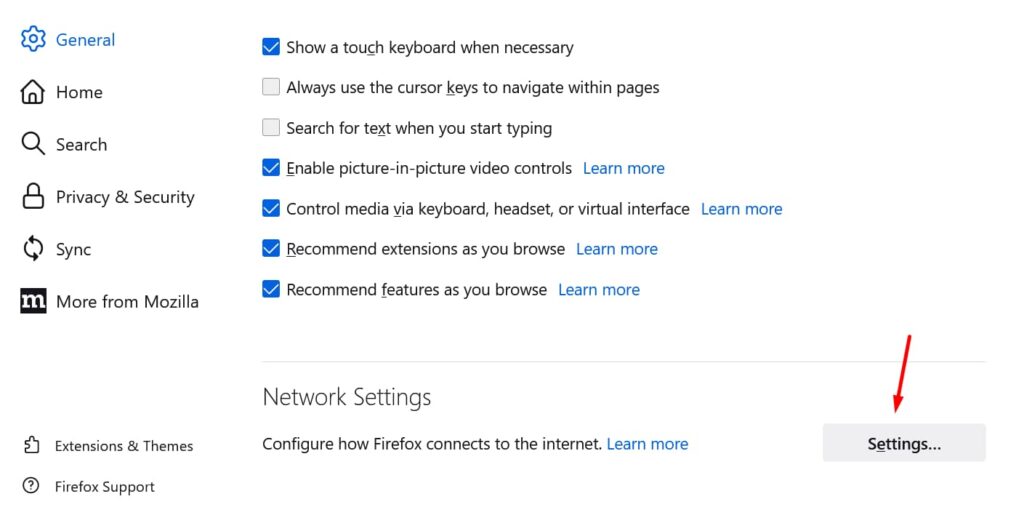A proxy server is a computer or network device that acts as an intermediary between your computer and the internet. It can be used to improve online privacy and security, as well as to bypass internet censorship and content restrictions. In this article, we will explain how to set up a private proxy server on the Firefox browser.
Google Chrome:
- Open Google Chrome and click on the “Menu” button in the top-right corner of the window.
- From the menu, select “Settings” and then click on the “Advanced” tab.
- Scroll down to the “Network” section and click on the “Change proxy settings” button.
- In the “Internet Properties” window, click on the “Connections” tab and then click on the “LAN settings” button.
- In the “Local Area Network (LAN) Settings” window, check the “Use a proxy server for your LAN” box and enter the IP address and port number of your proxy server.
- If your proxy server requires authentication, check the “Bypass proxy server for local addresses” box and enter your username and password in the “Proxy authentication” section.
- Click on the “OK” button to save your settings.
Firefox:
- Open Firefox and click on the “Menu” button in the top-right corner of the window.
- From the menu, select “Options” and then click on the “General” tab.
- Scroll down to the “Network Proxy” section and click on the “Settings” button.
- In the “Connection Settings” window, select “Manual proxy configuration” and enter the IP address and port number of your proxy server.
- If your proxy server requires authentication, check the “Use authentication” box and enter your username and password.
- Click on the “OK” button to save your settings.


Microsoft Edge:
- Open Edge and click on the “Settings” button in the top-right corner of the window.
- From the settings menu, select “Privacy and security” and then click on the “Proxy” option in the left-hand menu.
- In the “Proxy” section, click on the “Settings” button.
- In the “Connection Settings” window, select “Manual proxy configuration” and enter the IP address and port number of your proxy server.
- If your proxy server requires authentication, check the “Use authentication” box and enter your username and password.
- Click on the “OK” button to save your settings.
After completing these steps, your respective browser should be configured to use your private proxy server. Keep in mind that using a proxy server can slow down your internet connection, so you may need to experiment with different proxy servers to find one that offers the best balance of speed and security.
It’s important to note that while a private proxy server can help improve your online privacy and security, it’s not a foolproof solution. A determined attacker could still potentially track your online activities, so it’s important to use other security measures as well, such as using a virtual private network (VPN) and regularly updating your software.
Related Tech : Best Laptops for Content Creators in 2023
In conclusion, setting up a private proxy server on Firefox is a simple process that can help improve your online privacy and security. Just remember to choose a reputable proxy provider and to use other security measures to protect yourself online.
Frequently Asked questions:
Why do I need a private proxy server?
A private proxy server can improve your online privacy and security by acting as an intermediary between your computer and the internet. It can hide your IP address and encrypt your internet traffic, making it more difficult for others to track your online activities.
How do I choose a reputable proxy provider?
When choosing a proxy provider, it’s important to research their reputation and read reviews from other users. Look for a provider that offers secure and fast proxy servers, as well as clear and transparent pricing and terms of service.
Can I use a private proxy server on other browsers besides Firefox?
Yes, you can use a private proxy server on other browsers, such as Google Chrome and Microsoft Edge. The steps for configuring a proxy server on these browsers are similar to the steps outlined in this article, but may vary slightly. Consult the user manual or online help resources for your specific browser for more detailed instructions.
- Like
- Digg
- Del
- Tumblr
- VKontakte
- Buffer
- Love This
- Odnoklassniki
- Meneame
- Blogger
- Amazon
- Yahoo Mail
- Gmail
- AOL
- Newsvine
- HackerNews
- Evernote
- MySpace
- Mail.ru
- Viadeo
- Line
- Comments
- Yummly
- SMS
- Viber
- Telegram
- Subscribe
- Skype
- Facebook Messenger
- Kakao
- LiveJournal
- Yammer
- Edgar
- Fintel
- Mix
- Instapaper
- Copy Link
Leave a Reply